Your reviewer today had one of those moments when you are stuck by the enormity of the technological advance they’re witnessed in their adult life.
Because he recalls buying his first hard drive around 1987 with a capacity of 32MB, and the hard drive in this review has 20TB of space, potentially.
That makes it 666,666 times larger, a factor of enlargement that staggers belief, in addition to sounding vaguely demonic.
It may be that we are reaching the practical limits of magnetic recording on spinning metal disks, but we can’t complain that this technology hasn’t seen its potential fully explored.
But other than an extra 2TB of space, is the 20TB IronWolf Pro significantly different from the 18TB predecessor that came before it?
Price
The Seagate IronWolf Pro 20TB has a UK MSRP of £559.90 and $682.99 in the USA.
But even with this unit only now entering the channel, we found it online in the UK for £489.96, and that’s only £65 more than the 18TB model typically sells.
Conversely, in the USA the Amazon price of $761.99 infers that demand is higher than stock can satisfy, at least initially. Newegg.com has the same drive for $599.99, just $80 more than the 18TB option.
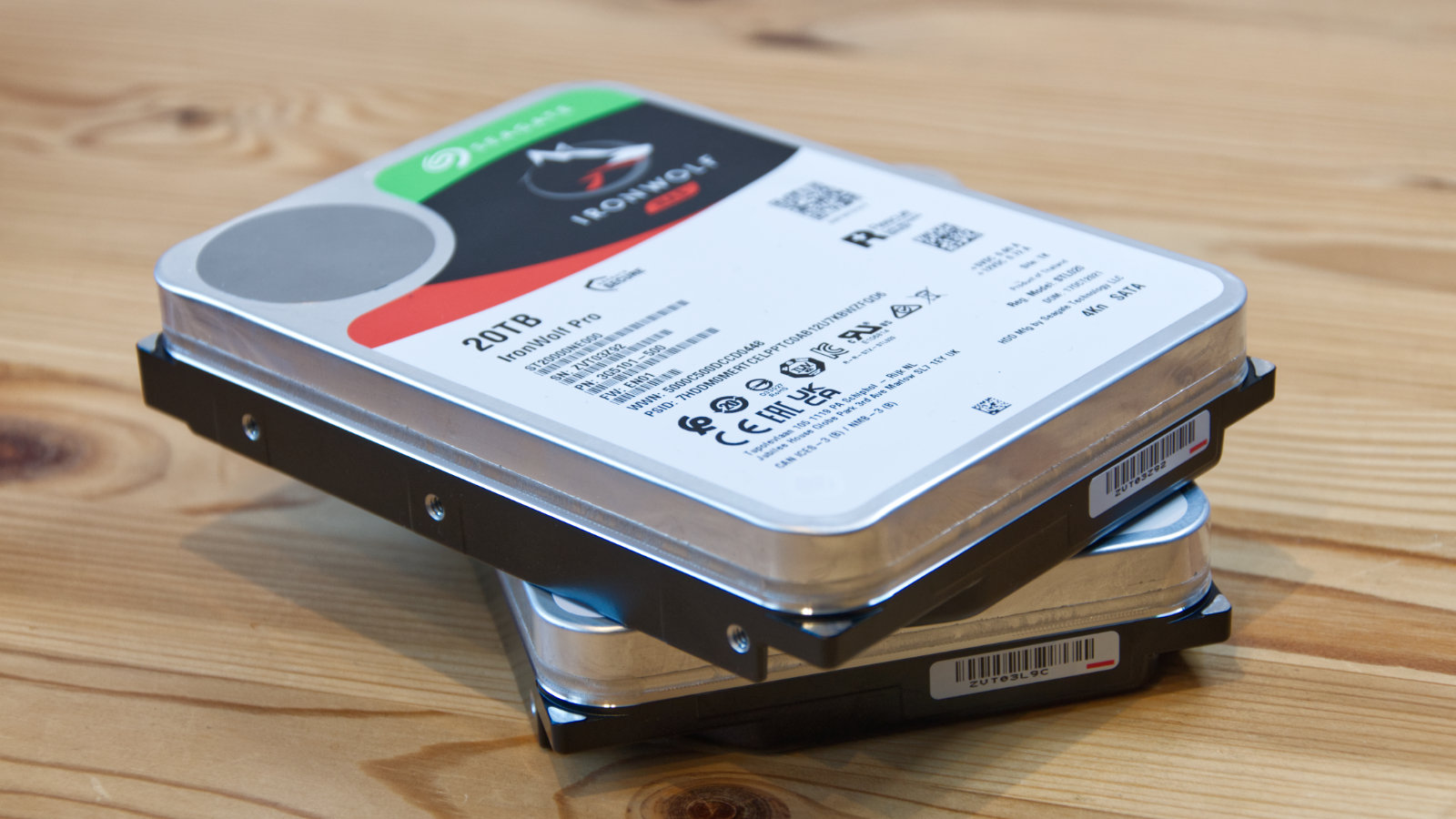
Design
Talking about the outside of the Seagate IronWolf Pro 20TB is mainly irrelevant. Externally, it appears to be identical to every other Seagate IronWolf drive in the 3.5-inch form factor.
In short, it’s a 670g block of metal that houses a CMR (Conventional Magnetic Recording) 7200 RPM hard drive with ten 2TB platters and 20 heads, all moving within a factory sealed helium atmosphere.
This design is exclusively a SATA 6GB/s connected drive, and can be used in any PC or NAS that accepts SATA drives of that spec.
It comes with 256MB of cache, a five-year warranty and three years of Rescue Data Recovery Services. MTBF (Mean Time Between Failure) is 1.2 million hours, and the yearly workload is 300TB.
If you are reading this review and are already bored with the numbers, we apologise in advance. Because this drive is all about the numbers, the good, bad and ugly.
One interesting feature of this design is the inclusion of RV sensors, custom accelerators that can be used to calculate adjustment based on thermal changes. When you have data density levels this high, even small alternations in the scale of parts can have an impact, and this design has that covered.
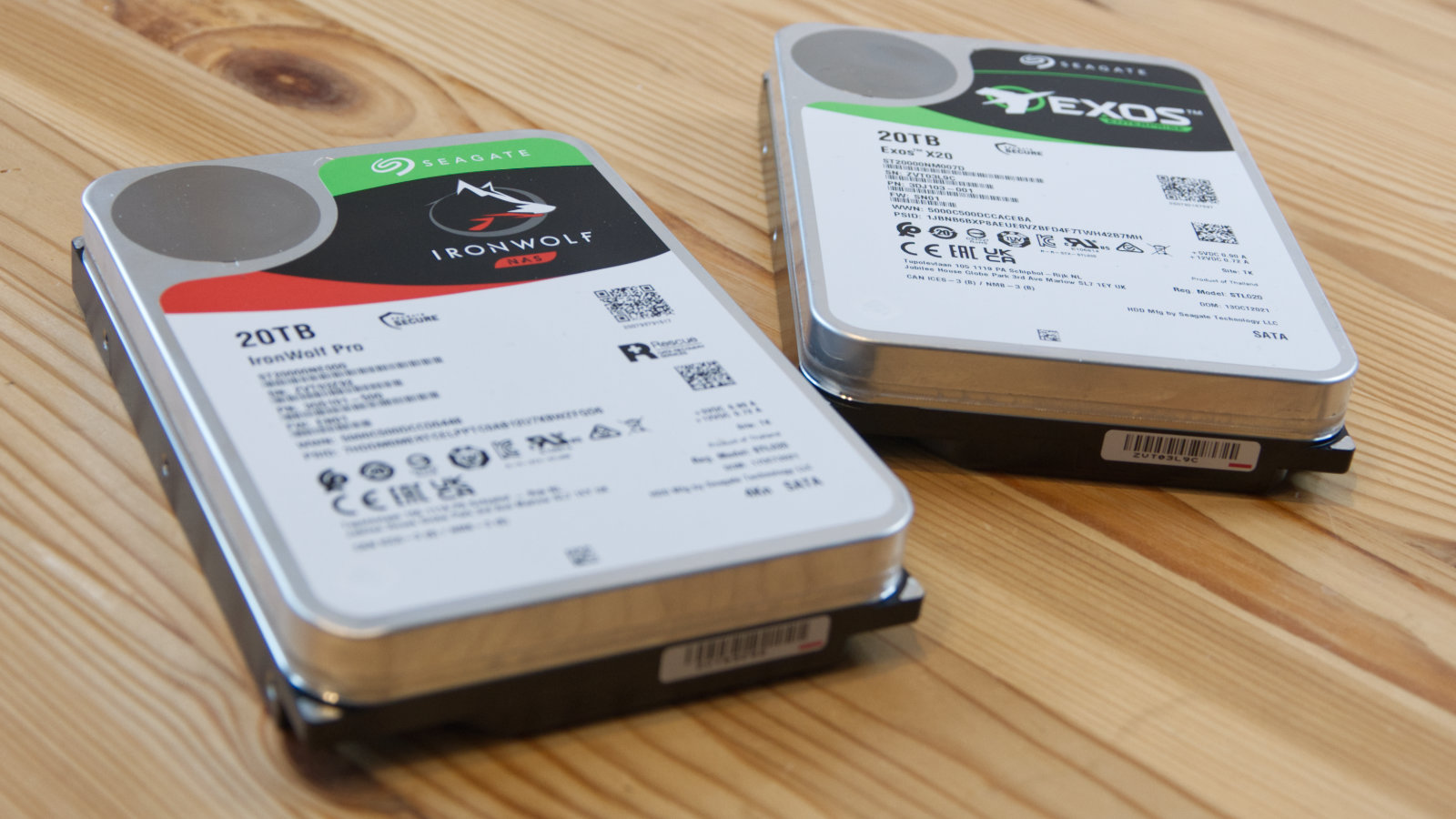
Performance
Here’s how the Seagate IronWolf Pro 20TB drive performed in our benchmark tests:
CrystalDiskMark: 286.8MBps (read); 279.3MBps (write) Atto: 277.89MBps (read, 256MB); 274.68MBps (write, 256MB)
PCMark10 Data Drive Score: 886
The previous 18TB IronWolf Pro could read and write sequentially at about 260MB/s, and the 20TB achieved more than 285MB/s in most tests. That’s nearly a 10% improvement, almost the same margin as the increase in capacity.
We also registered improvement in IOPs on reading and writing speeds over its predecessor.
But frankly, if you want impressive IOPs, then you need to invest in SSDs, not hard drives.
One surprise was that considering the performance improvements, we had expected the 20TB drive to pull more power and generate more heat.
Oddly, while idle, the 20TB pulls a little more power than the 18TB, 5.5W from 5.2W, but critically when it is running, it uses less power. Down from 8W on the 18TB to 7.7W on the 20TB, its standby power level is also less.
We’re unsure exactly how many of these drives you might need to use to turn this isn’t a significant financial win, but that they are more power-efficient is a good thing, and this should be reflected in the cooling needed for an array that uses them.
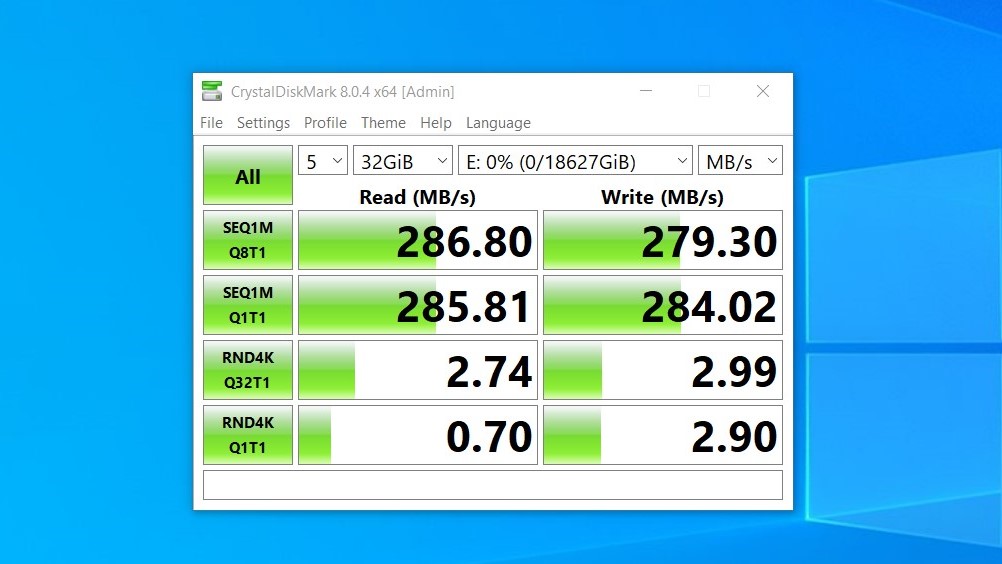
Endurance
There is one aspect to the IronWolf Pro 20TB that concerns us, and it’s the 300TB per year workload definition.
When we first saw these numbers, they sounded reasonable because the workload value isn’t like a TBW number on an SSD, as the 300TB is for each year of operation up to five years.
But working the maths a little, taking 300TB and multiplying that by the five years of warranty yields an operational guaranteed limit of 1500TB. Divide that by the capacity, and the total bytes transferred is only 75TB per TB of capacity.
That’s a worse workload than the cheapest unbranded SSD available. But it is even less impressive when you realise that Seagate defines the workload as “Annualized Workload Rate = (Lifetime Writes + Lifetime Reads) * (8760 / Lifetime Power On Hours)”
Therefore, where an SSD only considers writes in its TBW, this workload includes reads in addition to writes as part of the rate, disturbingly.
What we see here is the reality of technology with moving parts, where each operation the drive performs contributes to its ultimate failure, much like the playing of a vinyl record.
For those that use this drive in any system that performs a weekly data integrity check, they’ll be over the workload limit within four months irrespective of any operating use.
Should the drive fail after exceeding these workload limits, Seagate can reject warranty replacement accordingly.
We should mention that this definition of workload isn’t unique to Seagate, it’s the same for Western Digital drives, and their workload amounts aren’t different for the Red Pro 20TB.
This is less than the 550TB/y workload of the UltraStar DC HC560, WD Gold and Seagate EXOS 20TB.
Compared with even a cheap SSD, the workload lifespan of all these drives is disappointing, and due to the physical nature of the technology in them, this isn’t likely to improve as capacities increase further.
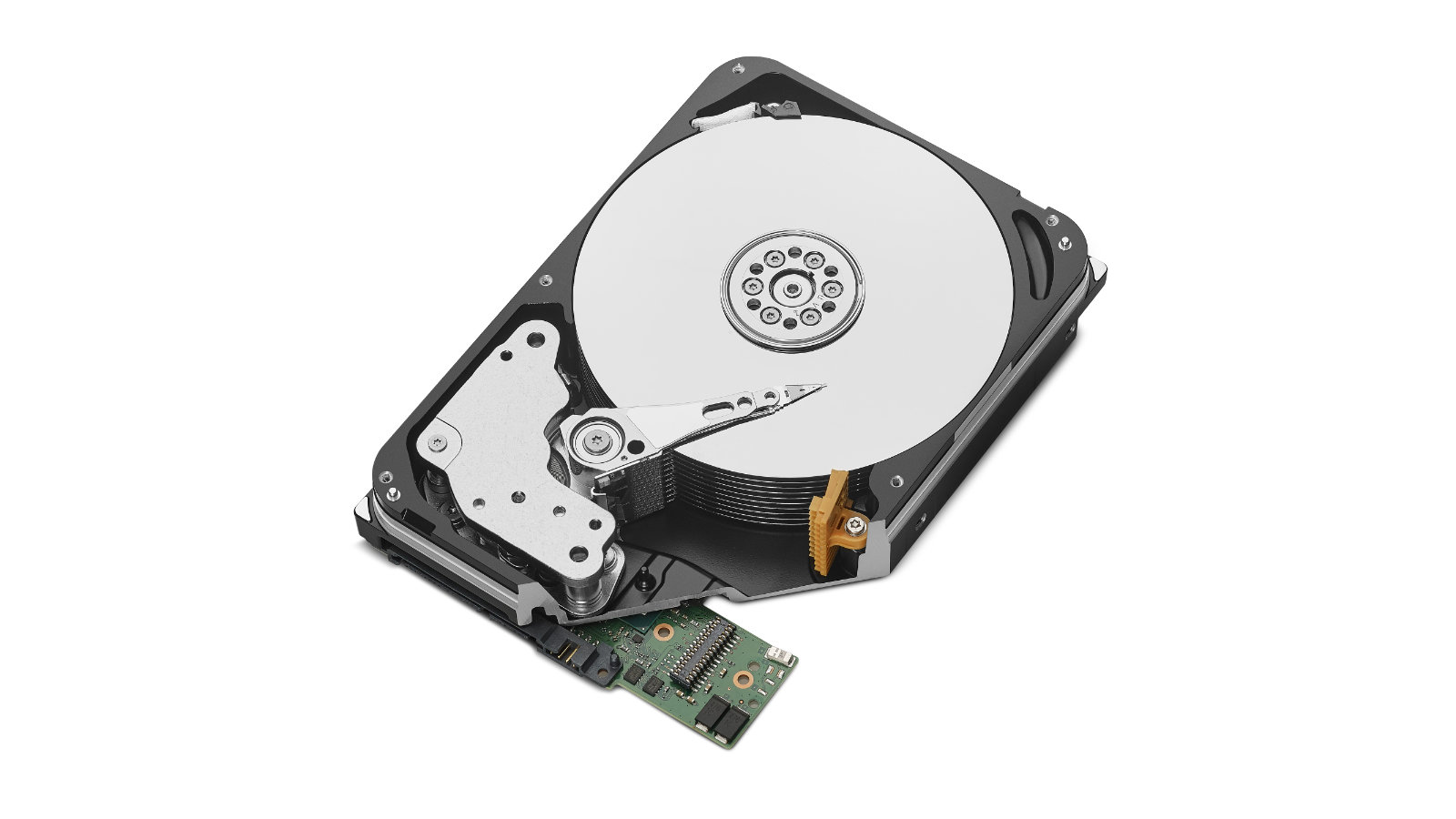
Competitors
Seagate brought its 20TB products to market alongside Western Digital, eliminating any special bragging rights on this scale of drive.
Western Digital has the WD Red Pro, WD Gold and UltraStar DC HC560 as its Consumer, Enterprise NAS and datacentre offerings. These have MSRPs of £ 565.99($499.99), £549.99 ($559.99) and £456.99 ($699.99), respectively.
Why in the UK the HC560 is cheaper than the WD Gold is curious, and the Red Pro is the most expensive in the UK of all drives.
But, the WD Red Pro 20TB that’s in direct competition with the Seagate IronWolf Pro 20TB is much cheaper, at least at the MSRP level.
Alongside its IronWolf Pro, Seagate also makes a 20TB EXOS design that we’ll be covering shortly, aimed at the same slice of the Enterprise market that the UltraStar DC HC560 was created.
But for now, the other competition is the reducing cost of 18TB and 16TB mechanisms, and how these might end up a cheaper option for those that can get sufficient capacity using them.
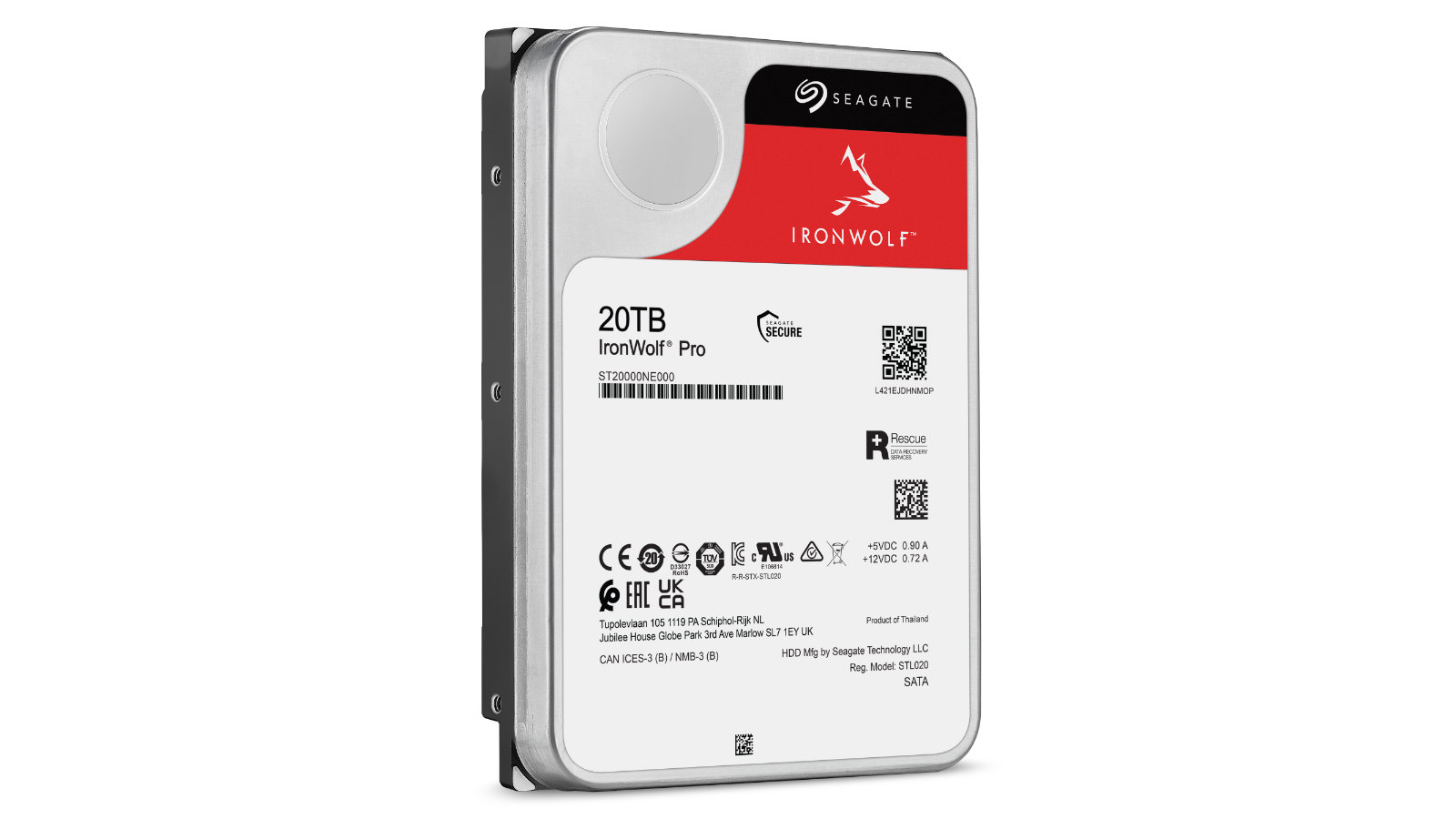
Final verdict
The IronWolf Pro 20TB offers some good incentives to choose it over the 18TB version and smaller capacities in each series that go beyond just being bigger.
But, based purely on the relatively low 300TB/y workload, we’d consider other options that aren’t specifically for the commercial and enterprise NAS sectors.
While better headline speed is always welcome, not having your RAID array eat itself is a much bigger deal. And in the current market, data centre mechanisms can offer greater yearly workloads and almost identical performance for a very similar price.
On that basis, we’d take the Seagate EXOS 20TB and its 550TB/year workload rating and 2.5M-hr MTBF over the IronWolf Pro 20TB.
In short, the Iron Wolf Pro needed to be cheaper, but Seagate got stuck not wanting to reduce the cost of the 18TB and smaller drives to accommodate the new flagship model.
- Best cloud storage online: free, paid and business options
from TechRadar - All the latest technology news https://ift.tt/bFQ4rya

No comments:
Post a Comment